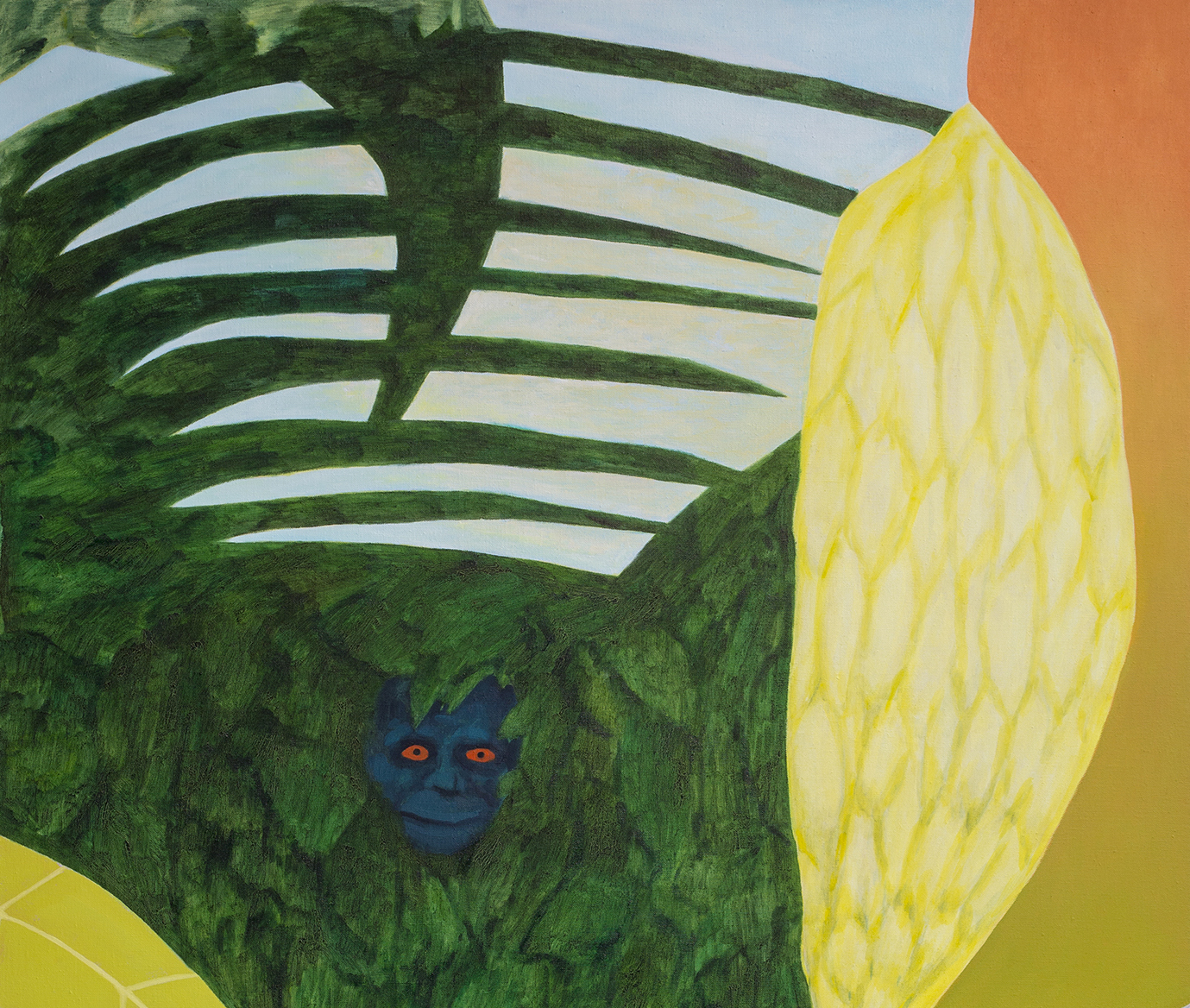
Essay
Something Breathes, Gasps: A Sighting of Akira Toxqui
by Bruno Enciso
At Archivo Colectivo
Reading time
5 min
A brief statement signed by the artists Sebastián Hidalgo and Rafael Uriegas states that “The appearance of Akira Toxqui implies disposing of the self.” Then who is there? I think I hear a creature breathing. Archivo Colectivo’s gallery has a window overlooking the Bosque de Chapultepec. I look at the trees and feel that they look back at me; there is something between the leaves, something moving and making my eyes tired from searching for it. Or is it behind me, in the picture? I think the creature is breathing with more and more agitation; being out of water seems to take from it a tremendous effort.
Mi jardín primitivo (“My Primitive Garden”) presents a series of pictorial exercises that move me intro a strange ecosystem. I walk slowly and contemplate the landscape. There is a great deal of vegetation, clouds, bodies of water, and, in the background, a volcano. It seems that this region is primarily inhabited by primates bearing friendly expressions and fascinating fur. The river rises from the ground; in that place live fish with wide-awake eyes. There are other presences that I do not think are animals, and in which I cannot even find a face. I don’t know what season of the year it is and I don’t know how long it will take for night to arrive. There’s no building in sight.
I am not afraid but I am very attentive. I would not want to frighten any of these creatures: most seem to ignore me; I’m sure several were hiding as soon as I arrived. Who knows which of my gestures might be threatening. I ask myself, where is Akira Toxqui? What does Akira Toxqui want? It could be that all this is the Akira Toxqui’s work, created in the artist’s image and likeness, although I suspect, rather, that primates have requested to bring people to visit them. One of them wears a tiara and no doubt enjoys being seen using it, as a symbol of power or as an accessory.
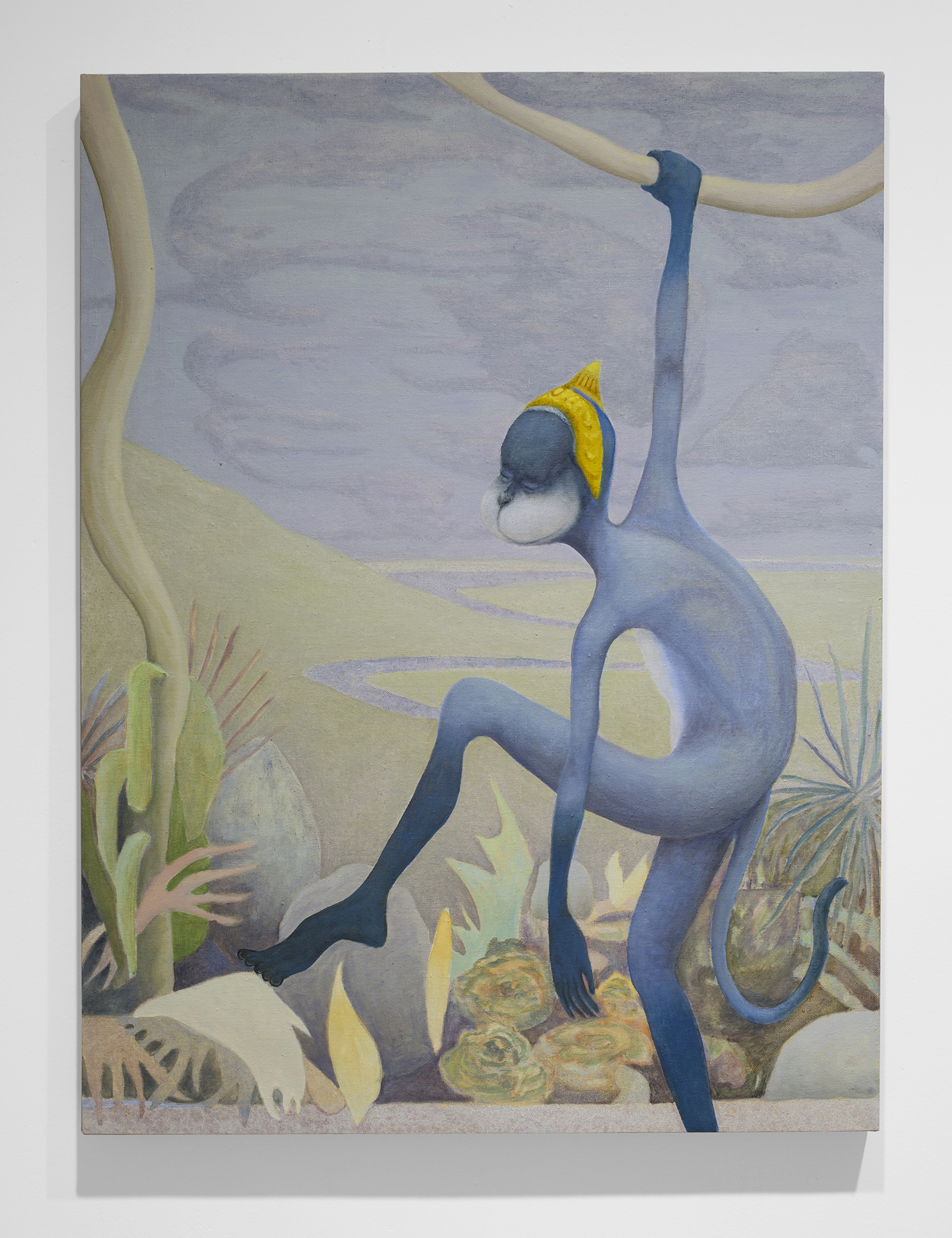
In this society of primates bearing friendly expressions everyone is an expert diver. They dive for fun but also to catch their dinner. The river has already told the fish that if they do not want to become someone else’s dinner it is better that they learn to walk. Sometimes the primates grow and reach the size of trees in order to collect their fruit faster. In dreams they leave their bodies and go to play with the spirits of the volcano. Not all of them think that men exist. Not all of them love the same idol.
The pictures in the exhibition are complex; they not only draw curious characters, they somehow disorient one’s gaze: it’s an unknown territory and it’s not clear where the horizon is. Some offer window views and others function like a microscope. Gathering together scenes of figuration and abstraction without simply resulting in a reflexive exercise on painting itself is interesting and difficult to sustain. Sprouts of imagination dot samples of well-formed works, preventing them from drying out. Of course, someone will have to take care of what germinates there in the middle.
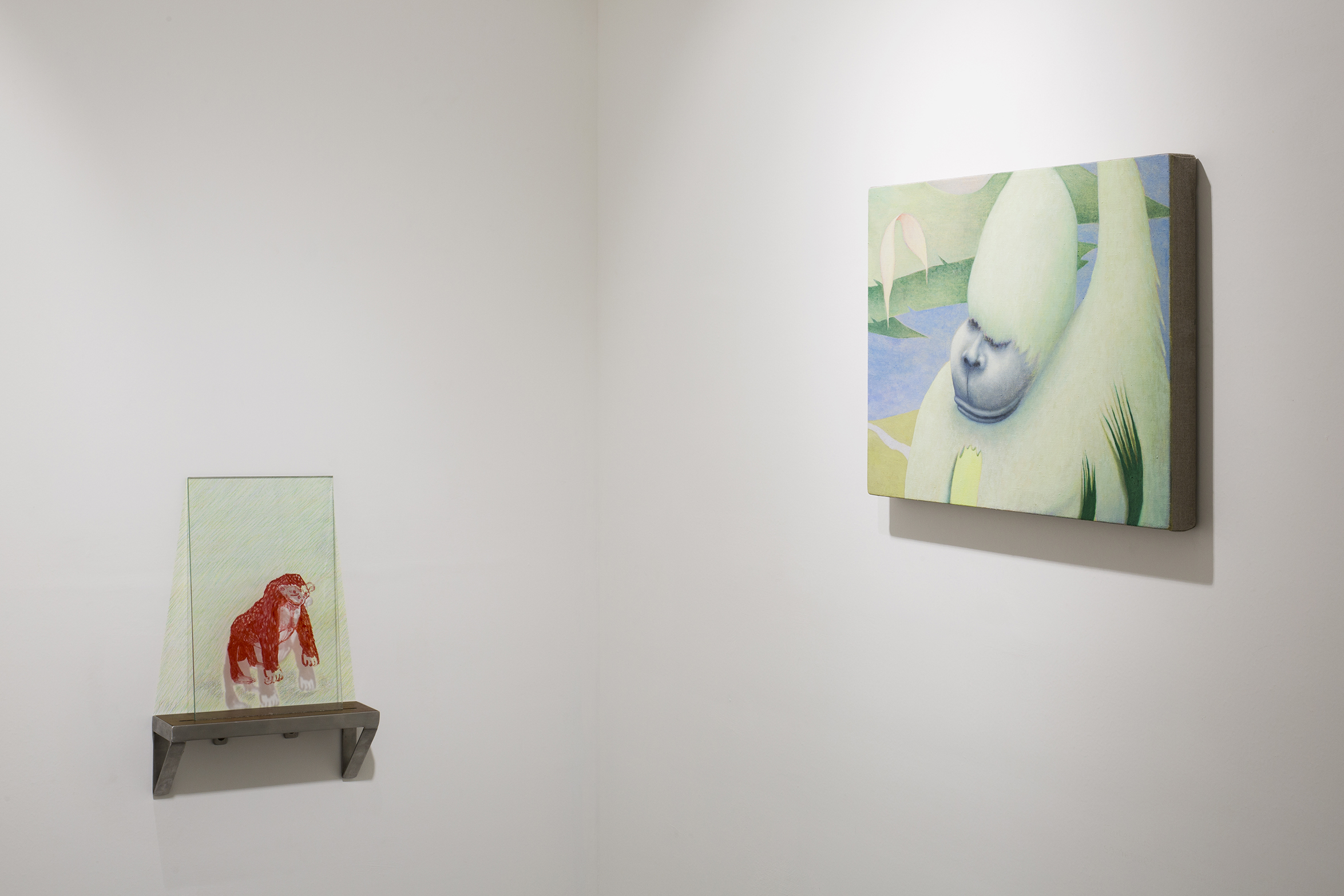
In order to inhabit this primitive garden I need to pay attention to the light, a game of scales and transparencies occupying many planes. If the ape grows, the fruit becomes small. In order to paint that animal next to the flowers I would need to see it up close, only to see its paw. Maybe this presence does not show its face because it is in full metamorphosis. How is it that both fish can live together in the same pond? One of them is so light that I can almost see through it.
The exhibition is generous with its images and powerful in stimulating the imagination and the gaze. Without getting in each other’s way, drawing and painting coexist in different supports such as canvas, glass plates, and paper. On the wall there are traces of subtle interventions crossed by spirits of a world that is not ours; however, here there is also desolation. The narrative impulse that I find in the two painters’ work—before offering an escape—suggests a drift: a pause in order to think of a world away from the noise of the city, without abandoning it.
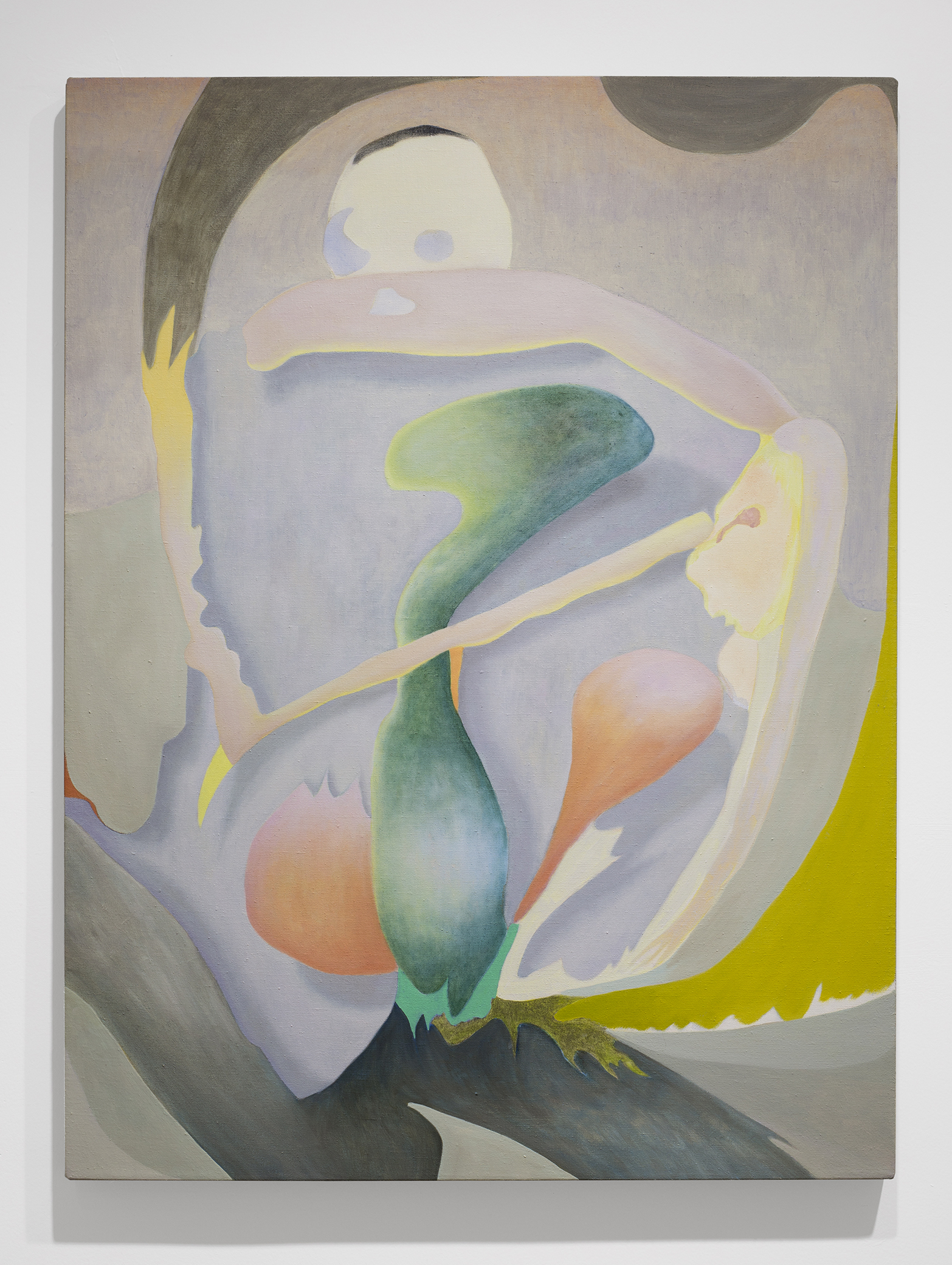
Imagining new possible worlds is much work. It’s interesting and provocative to think that what we still have to imagine is not directed towards towering buildings, artificial lights, and neon colors, but towards atmospheres with new suns bathing flora and fauna in pastel tones. These creatures amaze me and I look at them with a great deal of respect, but I still can’t let go of my anthropocentrism. I ask myself whether there were ever any humans here or whether humans have already perished; whether this is a look at another universe or whether someone pressed the reset button. Does Akira Toxqui have answers? If we cross paths, I’ll ask.
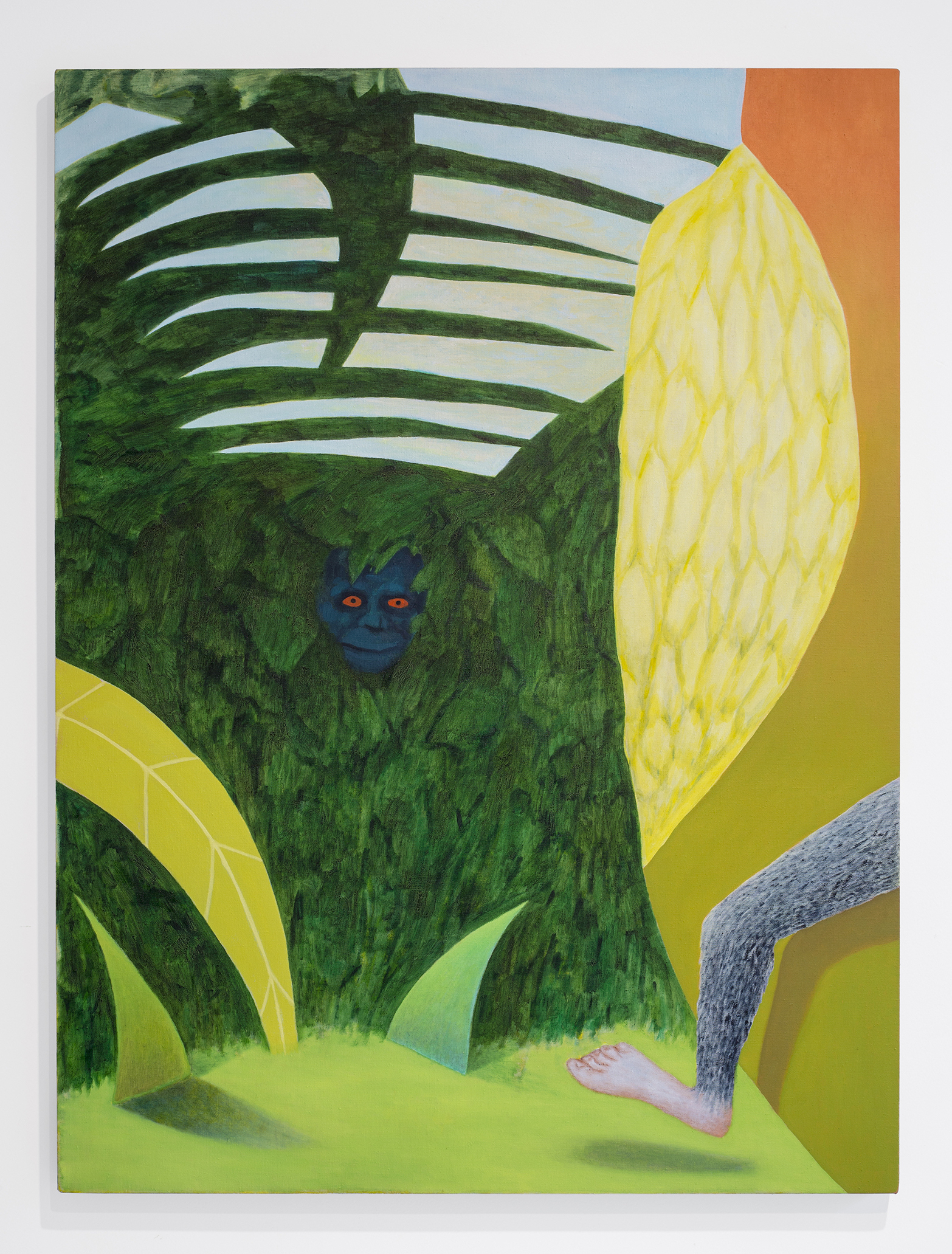
Published on December 5 2019